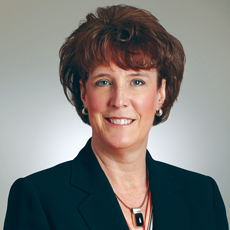
It was one of those March days when the sun shines hot and wind blows cold – when it is summer in the light, and winter in the shade.
— Charles Dickens, “Great Expectations”
I remember calling my mother, exhausted and frustrated. Employee morale was low. Staffing was tough and I was dealing with massive changes. I was doing all the things I knew to do, but it still was not making a difference.
Mom, in her wisdom, said it was the ides of March. That was Mom’s way to describe the period in March when people are difficult to deal with as they desire spring but are facing winter’s grip. I was seeing behaviors of irritability, curtness and dissension among the team. Yet, I could not blame what I was dealing with totally on the ides of March, as it was September.
When leaders face turbulent times, it can feel like the dead of winter. Storm after storm seems to come one right after the other. That was how I felt — it was like I was in a whack-a-mole game, lifting my head up and being pounded right back. Yes, I was doing the right things that the leadership books said to do, but my attitude was as bleak as the dead of winter. My team reflected what was being projected.
Dickens speaks of the light of summer when the sun shines hot. Think how you feel in those first days of spring when the temperatures warm up and the sun is on your face. Your spirit lifts, you feel lighter in your step, more capable of tackling the challenges before you.
We as leaders create seasons in our work environments through our leadership. Organizations go through seasons of change as well. I find as I work across the nation that most organizations have been stuck in winter long past what the calendar says. The staffing crisis weighs heavily, along with the changes coming from new regulations and outcomes due to the pandemic.
When I asked one leader what it felt like to work in an environment of winter, he gave me a look of concern as he questioned my cognitive ability, because it was snowing outside. What I was attempting to share is that when we as leaders fail to provide a vision of the metaphorical spring/summer, our teams sink deeper into the metaphorical fall/winter. Leaders are influencers. Our words, our actions influence the season that our organization is in.
Looking back to the time that I called my mom, I had to do some soul searching and honest listening. In a staff meeting, I asked people to write what season they thought we were in as a team:
- Winter — Showing up but not engaged, feeling dread about going to work, not thriving, or growing, not feeling recognized for contribution.
- Spring — Starting to feel engaged. Excited to show up, the beginning of growth and recognition for contribution.
- Summer — Fully engaged, growing, and thriving in their role. Feeling recognized for contributions.
- Fall — Drifting of engagement, moments of feeling recognized/not recognized. Feeling restless.
A few thought we were in fall, but most said we were in winter. Remembering that trust is an outcome based on actions, I took a deep breath and asked, “Do you think we can get to summer?” We all want to be in a work environment that is fully engaged, growing, and being recognized for contributions. By opening the dialogue through a safe use of the seasons, we worked as a team to change our season from winter to summer. We kept the vision of the season we wanted to be in as part of our staff meetings and our hiring practices.
What season are you in? What season are your facility and team members in? Do you long for summer? Start by opening the dialogue on where you are at now and where you want to be. If you are in winter, and long for summer, develop the plan together to get there. Employers who create a summer environment attract attention and desire to join in and be part of the team.
Martie L. Moore, MAOM, RN, CPHQ, is the CEO of M2WL Consulting. She has been an executive healthcare leader for more than 20 years. She has served on advisory boards for the National Pressure Injury Advisory Panel and the American Nurses Association, and she currently serves on the Dean’s Advisory Board at the University of Central Florida College of Nursing and Sigma, International Honor Society for Nursing. She was honored by Saint Martin’s University with an honorary doctorate degree for her service and accomplishments in advancing healthcare.
The opinions expressed in McKnight’s Long-Term Care News guest submissions are the author’s and are not necessarily those of McKnight’s Long-Term Care News or its editors.





